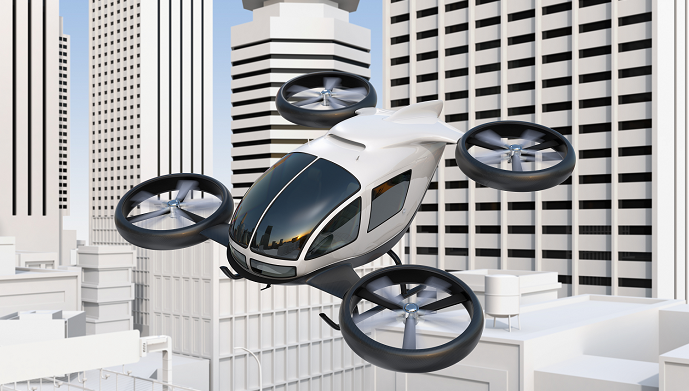B
y the end of 2025, it is estimated that there could be over 3,000 flying taxis or passenger drones in use globally. This figure is even bound to rise to over 100,000 by 2050, as a result of the implementation of more sustainable multimodal mobility networks.
The projected growth of air vehicles operating either via remote-piloting or self-piloting will bring unprecedented changes in how air traffic is currently being managed.
What key issues will the effective implementation and use of Urban Air Mobility (UAM) need to address?
Further eVTOL Technological Advances
There is a need for further technological advancement in eVTOL architecture for seamless Urban Air Mobility operations. The use of high-capacity energy batteries is among the important progress that should be made. Today, the batteries used in eVTOL can only power flights for short distances, such as from the airport to the city centers.
For sustainable mobility, there is a need for further development in energy storage to ensure better operational freedom like performing return flights without a recharge or further uses like inter-city flights.
The Unavailability of Landing Sites (Vertiports)
Today, many cities worldwide have air traffic control systems that monitor the activities of helicopters. The same systems can still come in handy when tracking hundreds of eVTOL (electric Vertical Take-off and landing) aircrafts. If eVTOL is to become a mass-market transportation system with thousands of flying taxis, then there will be a need to have a new airspace management system.
The system should also be designed so that the eVTOLs can sense everything around them and precisely identify the nearest flying taxi’s location. The introduction of mass transportation systems will also mean that cities have to develop public vertiports plans and offer subsidized prices for users of this new mass transportation system.
Safety Concerns
The diversity in the use of the urban airspace requires the implementation of innovative security solutions for the safe coordination of the eVTOL in the air. Implementing a high-speed, low-latency network connection is an innovation that can guarantee a seamless transmission of mission-critical information related to an in-flight trajectory.
Other advanced technologies, including artificial intelligence, may also be required to manage various flight plan understanding and conflict detection constraints. The large amounts of data being transferred also raise concerns about the cooperation of the different parties involved in managing a flight. For more effective UAM within metropolies, intercity mobility guarantees full compliance with safety regulations.
Last but not least, UAM manufacturers have to use robust and long-lasting material and components to guarantee an efficient and safe use in harsh conditions mainly related to bad weather.
It’s only by considering those three security aspects (airspace, data, manufacturing) that passengers’ security might be guaranteed.
The Need for Advances in Air Traffic Control
Over the years, great strides have been made in creating effective air traffic control, but there are plenty of challenges in the UAM traffic management field. One of the areas that need attention is the creation of a regulatory management system. There is a need for an effective dynamic mapping system that provides updates in real-time to guarantee constant location tracking of eVTOL whenever they are in-flight.
Final Thoughts
The transformation of mobility in different metropolitan areas is one of today’s modern aviation industry’s key frontiers. Incited by the need to ease city taxi jams in many densely populated cities globally, the Urban Air Mobility is one of the most effective aviation systems for cargo transportation and air passengers.
It is also meant to improve safety and, at the same time, offers opportunities in sustainability given that the advancement in motors and generators makes electric-powered flights more affordable.
While there might still be some issues to address, air mobility appears as a promising commuting option that most big cities around the world are considering seriously.
